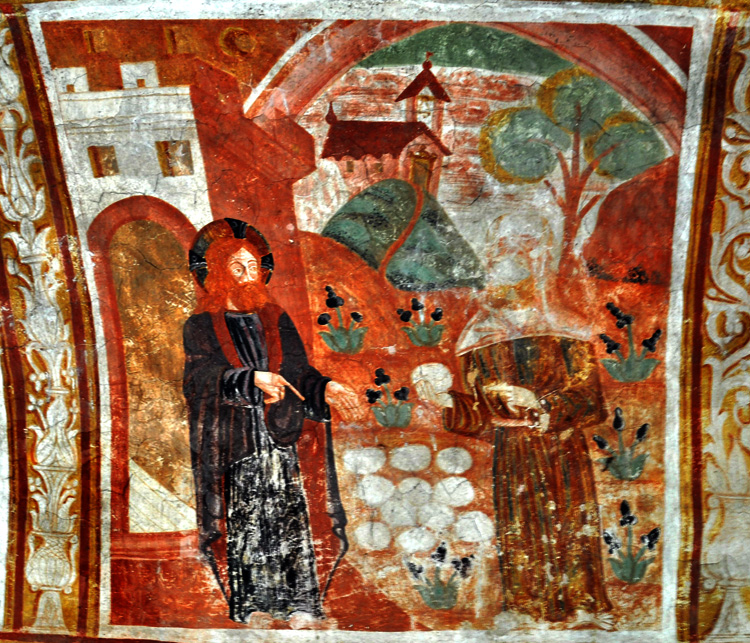Anthony of Padua, The Temptation of Christ

16th century
Fresco
Church of St. Roch, Draguć, Croatia
This fresco panel pictures the first of Jesus' temptations in Matthew 4:3. After his forty-day fast, "the tempter" says to him, "If thou be the Son of God, command that these stones be made bread." Most images of this temptation follow Luke 4:3, where the devil offers a single stone, but this one follows Matthew and has the devil hold one stone while eleven others lie on the ground. The twelve stones, round and crossed with lines to resemble bread, make for a strong reference to the Last Supper and thence to the Eucharist.
Medieval images of this kind usually pictured the devil as a grotesque, but in the 16th century and later he most often has a human form with some feature that will betray his true nature – in this case, splayed feet, a feature of devils remarked on in texts as diverse as Felix's Life of Guthlac in the 8th century, Dekker's The Roaring Girl in the 17th, and modern-day novels of the occult.1
The second temptation, that Jesus prove himself by leaping from "the pinnacle of the Temple," may be the reason for the church in the background with the exceptionally tall belltower. It is not an image of the church in Draguć, which is quite small.
View this image in full resolution.
Read more about images of the Temptation of Christ.
Photographed at the church by Richard Stracke, shared under Attribution-NonCommercial-ShareAlike license.
1 Colgrave, 103. Knowles, 9 (The Roaring Girl, scene 9 line 10).